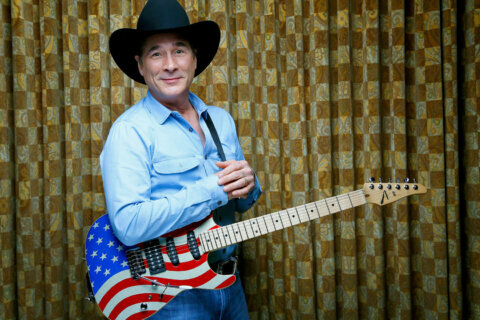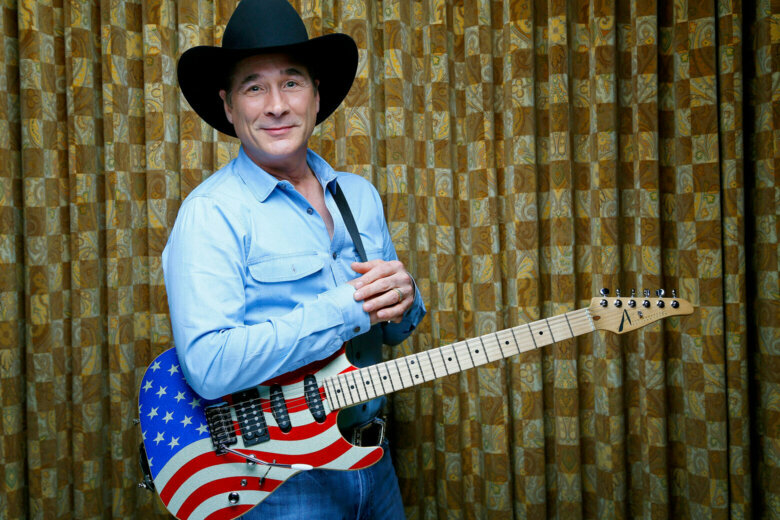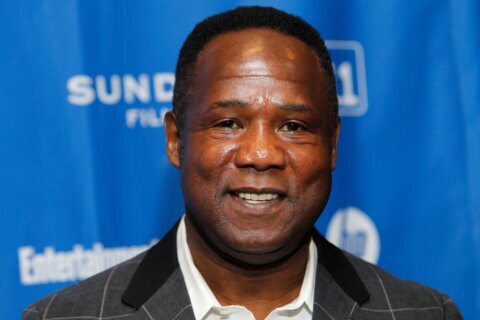It’s only a week away, but country music fans will be anxiously “killin’ time” to see Clint Black.

The country legend performs live at Wolf Trap in Vienna, Virginia, on Wednesday, July 3, in a tour that marks the 35th anniversary of his breakthrough album “Killin’ Time” (1989).
“We’re going to be doing the entire ‘Killin’ Time’ album from top to bottom in order of sequence, but we’ll be doing a bunch of the other hits too,” Black told WTOP.
“Jake, my bass player of over 35 years, had that idea, and then my managers got wind of it, they said, ‘Oh, you’ve got to do this.’ I just wasn’t sure anybody wanted to hear the whole album, but it’s been going really well. We’ve been doing it and it’s been great.”
Born in New Jersey in 1962, Black mostly grew up near Houston, Texas, before making his way to Nashville. Upon signing with RCA, he joined Garth Brooks, Travis Tritt and Alan Jackson as the esteemed “Class of ’89,” but it was Black who won the Country Music Association’s Horizon Award, crowning him as the next big thing.
“I never thought about it that way,” Black said.
“I was overwhelmed by it all and it could have been any one of us. I think I was out in front of everyone, so I maybe had a leg up because I had already had those No. 1 and No. 2 singles or maybe the fourth or fifth single off that album had gone No. 1 by then, so I had a little lead on them, but to me, I was decidedly noncompetitive. I thought, ‘I’ll leave that to the record companies and managers and I’ll just be an artist.’ I tried not to think of it that way, I just tried to compete with myself to keep getting better.”
His debut album “Killin’ Time” (1989) featured hit after hit: “A Better Man,” “Nothing’s News,” “Nobody’s Home,” “Walking Away” and an iconic title track, voted on Country Music Television’s Top 100 Country Songs of All Time.
“‘A Better Man’ was the first single, that hit No. 1, which was, I think, very rare for a debut single, so that kind of kicked open the door,” Black said.
“Then, when ‘Killin’ Time’ came out, it was kind of teed up, so together they became the No. 1 and No. 2 song of the year on Billboard, so that just solidified like, ‘I’m in!'” Black said. “When I talk to people about that album, especially people who were in their teens at the time, that song ‘Killin’ Time’ is the one they talk about. I still love singing it.”
Countless hits followed throughout the early 90s, including “We Tell Ourselves” (1992), “When My Ship Comes In” (1993), “No Time to Kill” (1993), “State of Mind” (1993), ”A Good Run of Bad Luck” (1994), a killer cover of Eagles’ “Desperado” (1996), but it’s hard to top “Like the Rain” (1996), using a thunderstorm as an analogy for love.
“The first place I lived when I got to Nashville was too far out of town, so just to get back into the neighborhood I rented a studio apartment in a high rise,” Black said.
“I was on the fifth floor and Lisa (Hartman) and I were looking out the big window watching it just pour, just a deluge of rain. She always loved it when it rained. … I picked up my guitar and started playing some chords that felt like rain chords, the sky is darkening and I just started writing on that theme: ‘I never liked the rain until I walked through it with you.'”
In the late 90s, Black delivered “Something That We Do” (1997), “The Shoes You’re Wearing” (1998) and “Nothin’ But the Taillights” (1998), which brilliantly used visual storytelling to describe a woman leaving him stranded on the side of the road: “That’s about as lonely as a highway’s ever been, back here with my thumb out in the wind.”
“It’s a beautiful tragedy,” Black said.
“That’s one of my fastest hits. It became a hit quicker maybe than anything. I wrote it with Steve Wariner, I went over to his house late one evening after dinner. He had parts of the idea and we cranked up the coffee pot and started putting the puzzle together. … This was the first album where I played most of the electric guitar. … That lick at the top of the song comes from something he taught me that night.”
Along the way, he delivered some classic country duets, joining Wynonna Judd for “A Bad Goodbye” (1993) and Martina McBride for “Still Holding On” (1997). Still, his greatest collaboration was with his own wife, singer and actress Lisa Hartman Black (“Knots Landing”), for the beautiful wedding song “When I Said I Do” (1999).
“The biggest influence on my life now is my best friend, Lisa,” Black said.
“I’m standing around the kitchen, she’s making soup and I start writing the song, but I don’t tell her. … I just start teaching her this song and she starts singing harmonies with me and I wrote it for two days around the kitchen and told her she had to record it with me. She was reluctant and it almost didn’t happen. Finally, she agreed four days before my deadline. … I didn’t tell the record company who was singing on it, they guessed everybody but Lisa.”
They’ve now been married for 23 years, thanks to a little tip from Roy Rogers and Dale Evans.
“Roy found out we were getting married and said, ‘I’ll give you one piece of advice: don’t ever go to bed angry,'” Black said.
“That’s really simple advice, but so critical. Get your things worked out. Don’t leave them for another day because it’ll be too blurry by then. I think the real key is you’ve got to figure out all the little things that annoy, embarrass, frustrate and confuse. That’s what we did, then I just stopped doing them. Communication is the real key. You have to understand that you’re not going to see eye to eye on everything, but you just have to talk about it and grow closer together.”
In marriage and in life, time is precious, a recurring theme from “Killin’ Time” to “Spend My Time” (2004), featuring the lyric: “No matter how much time we buy, we can never spend it all.”
Listen to our full conversation on the podcast below:
Get breaking news and daily headlines delivered to your email inbox by signing up here.
© 2024 WTOP. All Rights Reserved. This website is not intended for users located within the European Economic Area.









